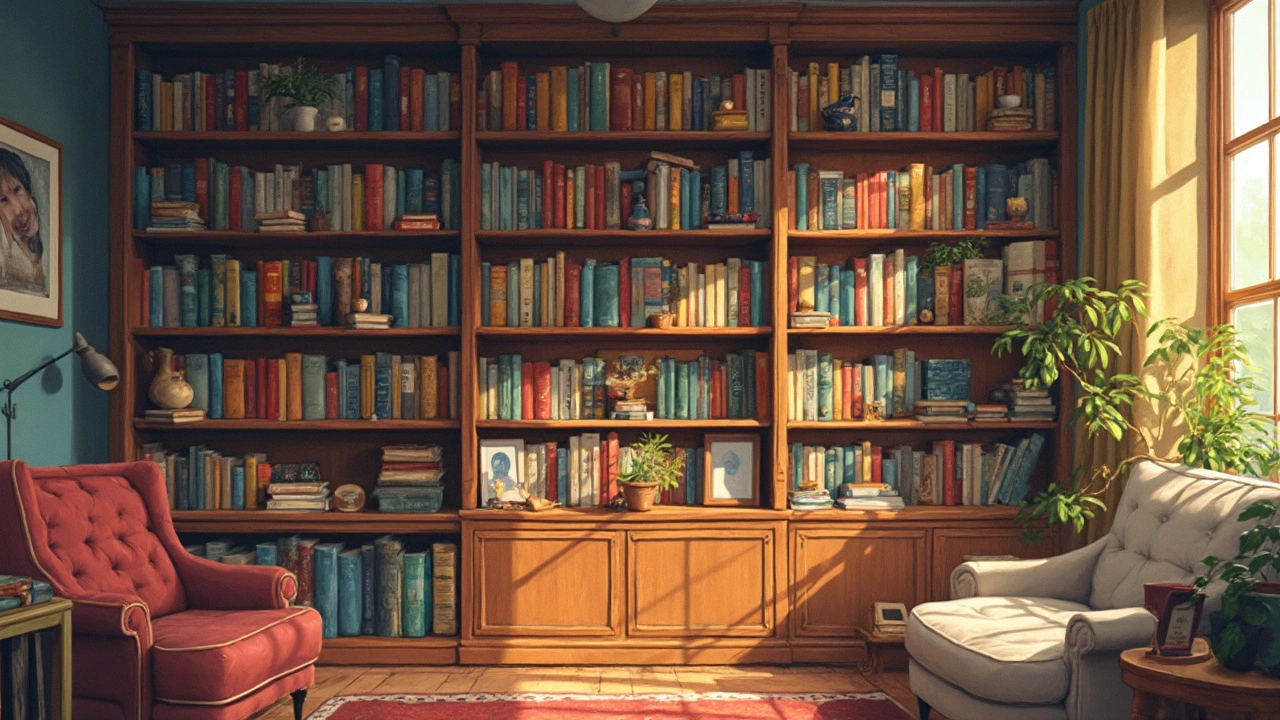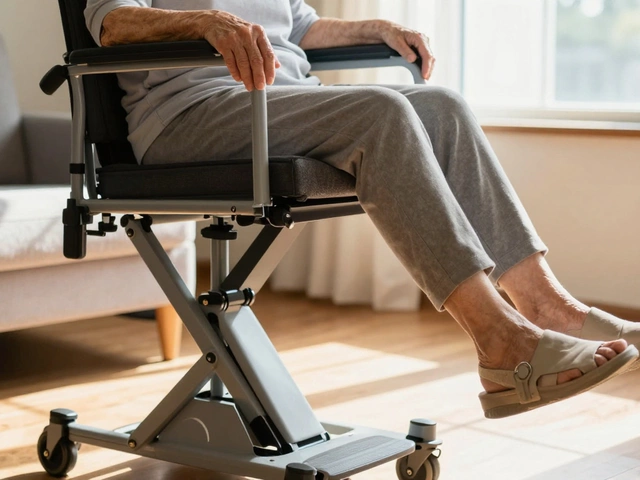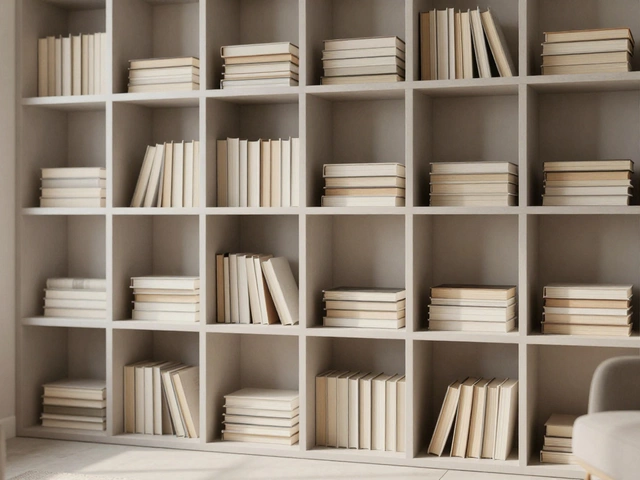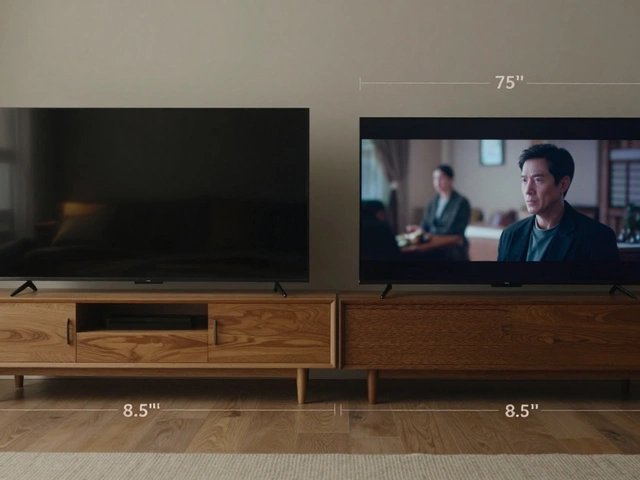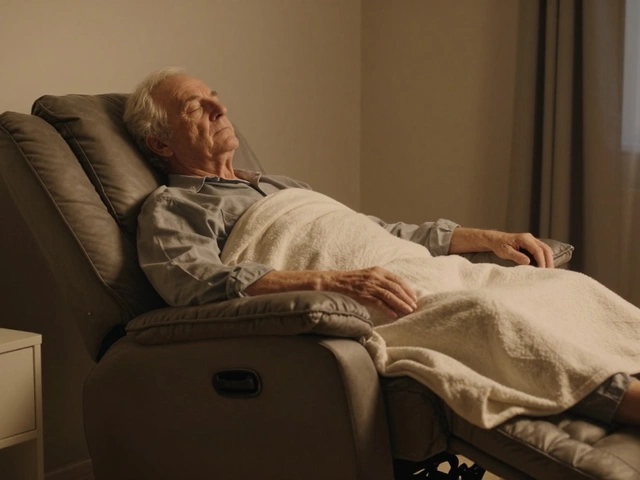If you’ve run out of space on your bookshelf, you’ve probably considered tucking books in the back row or even creating a double row. It seems like a quick fix, but is it actually a good move? Think about it: those books in the back tend to vanish from your memory. I’ve lost count of how many times I’ve rediscovered an old favorite—just because it was out of sight for years.
Still, some folks love the idea. More space, less clutter out front, and maybe a cleaner look. But what you gain in storage, you might trade for deeper frustration the next time you want that one book buried behind a dozen others. Before you get creative with your shelf, it pays to know the pros and cons. Let’s break down if this hack works for real life—and your collection.
- Why People Push Books to the Back
- Impact on Book Access and Use
- How It Affects Book Condition
- Design Tricks to Maximize Shelf Space
- Practical Tips for Every Book Lover
Why People Push Books to the Back
Space always runs out faster than we expect—especially if you’re a reader or collector. That's one big reason books end up in the back of the bookcase. Shoving a second row of books behind the first can double your storage without buying another shelf. It's a straightforward shelf hack, and parents like me do it a lot, especially to stash old textbooks, novels you rarely read, or your kid’s outgrown chapter books.
Another reason is to make the front of your bookcase look tidier. People keep favorite titles, good-looking covers, or current reads at the front. The rest—the less attractive or sentimental ones—go behind, hidden but still safe. I've even seen neighbors hide messier or worn-out books in the back so picture-perfect shelves stay on display for guests.
Sometimes, it’s just about organizing by function. For example:
- Tucking reference books or technical guides in the back when you rarely need them.
- Storing seasonal reads or holiday books out of the way until needed (yes, we keep Aldo’s Christmas stories hidden 10 months a year).
- Saving collector’s editions or fragile books from prying hands or eager little ones.
If you own a big mix—old paperbacks, art books, and everything in between—double rows feel like a quick win for maximizing every bit of shelf real estate. Still, it’s worth asking if this bookcase trick really works for day-to-day use. That’s what we’ll dig into next.
Impact on Book Access and Use
Shoving books to the back of your bookcase sounds smart—until you need something in a hurry. Out of sight usually means out of mind. Studies have shown that people are about 70% less likely to read or even remember books kept in the back row compared to books facing them every day. It’s no wonder most folks forget what titles they actually own.
This extra layer makes grabbing a book a bit of a chore. If you’re in a hurry, or if your kid’s hunting for a specific volume for homework (my son Aldo can never find his adventure series when it’s behind a wall of old cookbooks), you end up pulling out half the front row just to get to what you want. It gets old fast.
Let’s look at the typical headaches that double stacking causes:
- You lose track of what's in your collection. If you can't see it, you probably won't use it.
- Book swaps or lending become a pain—it's easy to forget where certain books are.
- It takes more time to keep the whole shelf organized, especially if you move books around regularly.
Here’s a simple comparison with single-row and double-row setups:
| Setup Type | Easy to Find Books | Quick Access | Organizing Ease |
|---|---|---|---|
| Single-Row | Very Easy | Quick | Simple |
| Double-Row | Harder | Slower | Tricky |
When it comes down to it, a bookcase should serve you—not make your life harder. If you actually read or share your books often, keeping them upfront where you can see the spines just makes everything smoother.
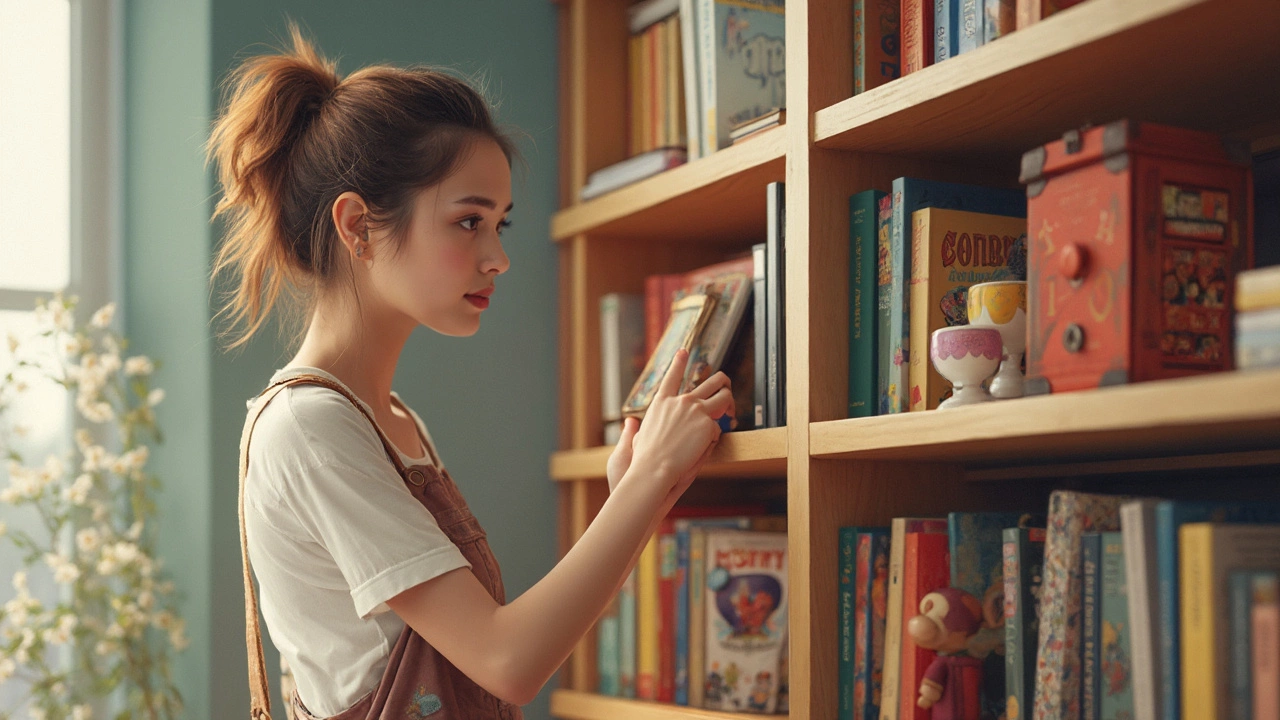
How It Affects Book Condition
When you push books to the back of a bookcase, you’re changing the way they breathe and handle the daily bumps and touches. That might not sound like a big deal, but it can seriously mess with how long your books hold up. Let’s get into the specifics.
Airflow is top of the list. When books are squished in a double row, the ones in back barely get any air. That can lead to musty smells and, worse, mold growth—especially if you live somewhere humid. Without regular airflow, paper gets a higher shot at yellowing. Stick your nose in a book that’s been at the back for years, and you’ll know what I’m talking about right away.
Sunlight is another factor. Books at the back tend to dodge direct sun, so they’re less likely to get faded spines. That sounds great until you realize that being completely in the dark can make them easier spots for silverfish and other bugs that prefer shade and less disturbance. Less handling can also mean more dust, plus those annoying paper spots called "foxing."
Not only that, but double-rowing makes you more likely to wedge in or yank out books sideways. That puts strain on their spines, especially if your shelves are packed tight. Anybody who’s tried to pull a classic hardcover from behind a line of paperbacks knows it’s pretty easy to damage the cover or the jacket. Books stacked too tight can also warp over time, especially if your shelf bends in the middle (cheap IKEA, anyone?).
| Condition Issue | Why It Happens |
|---|---|
| Mold/Musty Smell | Poor airflow & high humidity in back rows |
| Spine Damage | Poor handling when reaching over front row |
| Foxing (Spots) | Less dusting & cleaning in hidden spaces |
| Warping | Pressure from overcrowding or shelf sagging |
| Pest Damage | Dark, undisturbed places are bug magnets |
If you love your books to look good years from now, it’s smart to check the back row every once in a while—wipe down, let them breathe, and make sure the shelf isn’t overloaded. And if your kids like to pull random titles (like my son Aldo does), watch out for book avalanches, which aren’t just messy but could mean bent covers and torn pages.
Design Tricks to Maximize Shelf Space
If your home feels overrun by books but you don’t want to double up rows, you’re not alone. Most of us wish we had more bookcase space without hiding favorite reads behind stacks. There are some smart, easy ways to fit more onto your shelves and keep every title in plain sight.
First, consider vertical stacking—just switch things up by laying a handful of books flat, then stack others upright on top. It breaks up the look and lets you store more per shelf, especially with paperbacks that tend to tip over. This also makes it easier for kids like Aldo to spot the spines at their eye level.
Adjustable shelves are a game changer. Most IKEA-style bookcases let you move the pegs to fit books of different heights. If you’ve got lots of short novels, squeeze the shelves closer together and save that precious vertical space for art books or photo albums down below.
End-cap racks or wire shelf dividers can keep books upright without wasting space at the ends. You’ll squeeze a couple more titles in and avoid those frustrating book avalanches.
If you’re more of a numbers person, here’s a quick look at how organizing methods affect bookcase capacity:
| Method | Books per 100cm Shelf (Avg) | Findability |
|---|---|---|
| Single row upright | ~24 | Easy |
| Double row (front & back) | ~48 | Difficult |
| Vertical/horizontal mix | ~28-30 | Medium |
Another neat hack: use magazine files or bins for thin paperbacks or comic books. You can slide them out and flip through quickly. For families, labeling shelves by genre or reader (like “Dad’s Sci-Fi” or “Aldo’s Adventure”) can keep mess to a minimum.
Wall mounts and floating shelves above your main bookcase add bonus space, especially for oversized books and décor. Whatever tricks you use, prioritize shelves you look at most often for the books you reach for regularly.
And of course, the golden rule—don’t overdo it. A jam-packed bookcase isn’t just tough to dust, it’s easy to forget what you even own. With a bit of simple strategy, you can keep everything accessible, tidy, and display more of your collection without cramming everything in the back.
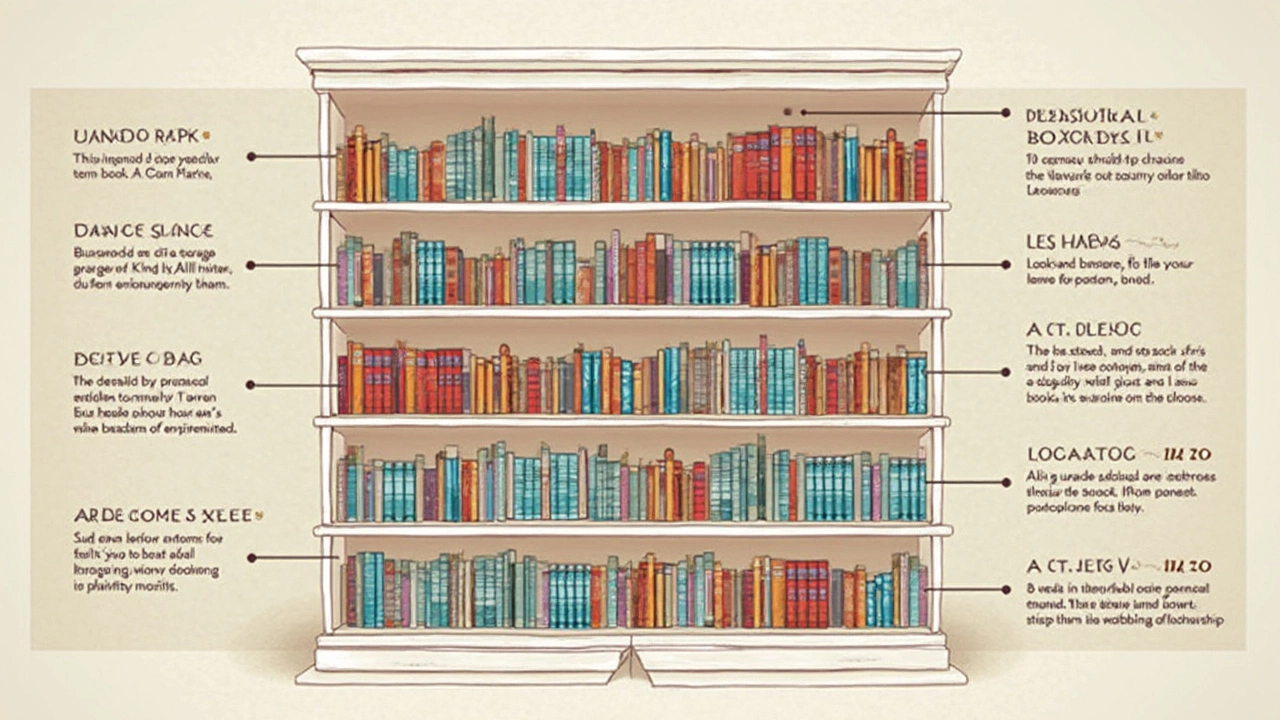
Practical Tips for Every Book Lover
Stacking books in the back row of a bookcase seems like a solid solution when you’re short on shelf space. But nobody wants to turn their book hunt into a wrestling match with their shelves. Here are a few ways to keep things under control and actually enjoy your collection.
- Bookcase depth matters. Standard bookshelves are about 10–12 inches deep—just enough for one row of books. If you do have deep shelves, try to group similar genres together, so you know exactly what’s hidden in the back. Bonus: series sets or rarely used reference books are perfect for the back row.
- Catalog your titles. Simple tricks like using your phone camera or a spreadsheet make it way easier to remember what’s hiding. There are bookshelf apps like Libib and Book Catalogue that are honestly game changers if your collection’s big.
- Add shelf labels. Sticky notes or washi tape on the edge of the shelf help you remember what lives behind the front row. Trust me, it beats blindly pulling out half your books just to find one paperback.
- Store less-used or seasonal reads in the back. If you reread cookbooks only during the holidays, or your kid’s old comics aren’t a daily pick, pop them in the rear row and bring favorites up front.
- Think about lighting. Shadows make back-row books even harder to spot. A cheap battery-powered LED strip under each shelf lights up the whole row and keeps your books visible—no more surprises or dust bunnies.
Check out this quick comparison to see what you gain (or lose) by double-row stacking:
| Feature | Single Row | Double Row |
|---|---|---|
| Book Visibility | 100% | About 50% |
| Easy Access | Instant | Have to move front books |
| Space Efficiency | Limited | Doubles capacity |
| Risk of Damage | Low | Medium (from moving books often) |
At home, I use the double-row trick for Aldo’s outgrown picture books. But Serena keeps her favorite cookbooks up front while the obscure, never-used ones hang out in back. It’s not perfect, but it works when you play it smart. Stay organized, and you’ll get way more out of every inch on your shelf, even if you push some books to the far side.

